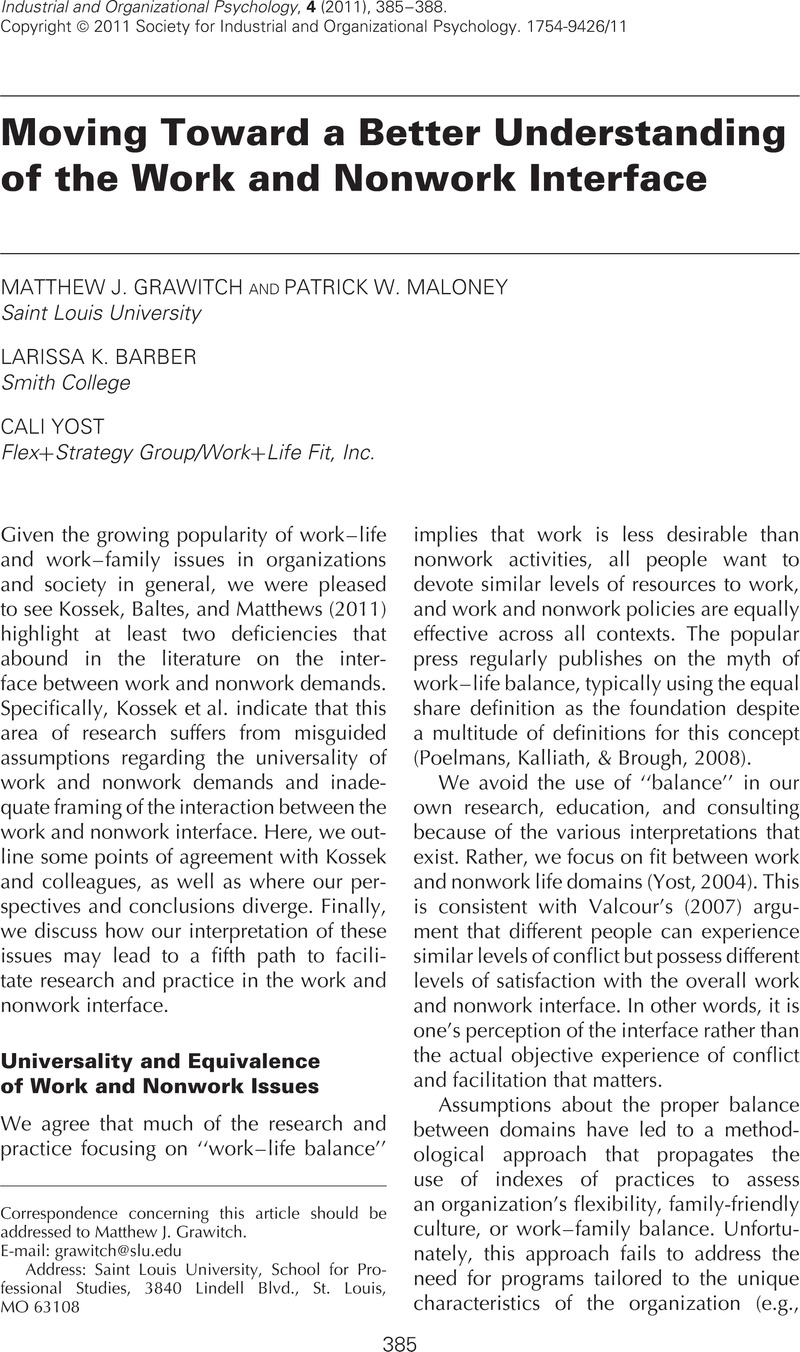Crossref Citations
This article has been cited by the following publications. This list is generated based on data provided by Crossref.
Kossek, Ellen Ernst
Baltes, Boris B.
and
Matthews, Russell A.
2011.
Innovative Ideas on How Work–Family Research Can Have More Impact.
Industrial and Organizational Psychology,
Vol. 4,
Issue. 3,
p.
426.
Onken-Menke, Greta
Nüesch, Stephan
and
Kröll, Claudia
2018.
Are you attracted? Do you remain? Meta-analytic evidence on flexible work practices.
Business Research,
Vol. 11,
Issue. 2,
p.
239.
Delanoeije, Joni
and
Verbruggen, Marijke
2019.
The Use of Work-Home Practices and Work-Home Conflict: Examining the Role of Volition and Perceived Pressure in a Multi-Method Study.
Frontiers in Psychology,
Vol. 10,
Issue. ,
Pacheco, Tyler
Coulombe, Simon
and
Meunier, Sophie
2021.
When Work Conflicts With Personal Projects: The Association of Work-Life Conflict With Worker Wellbeing and the Mediating Role of Mindfulness.
Frontiers in Psychology,
Vol. 12,
Issue. ,
Salamin, Xavier
2021.
Specific work-life issues of single and childless female expatriates: an exploratory study in the Swiss context.
Journal of Global Mobility: The Home of Expatriate Management Research,
Vol. 9,
Issue. 2,
p.
166.





